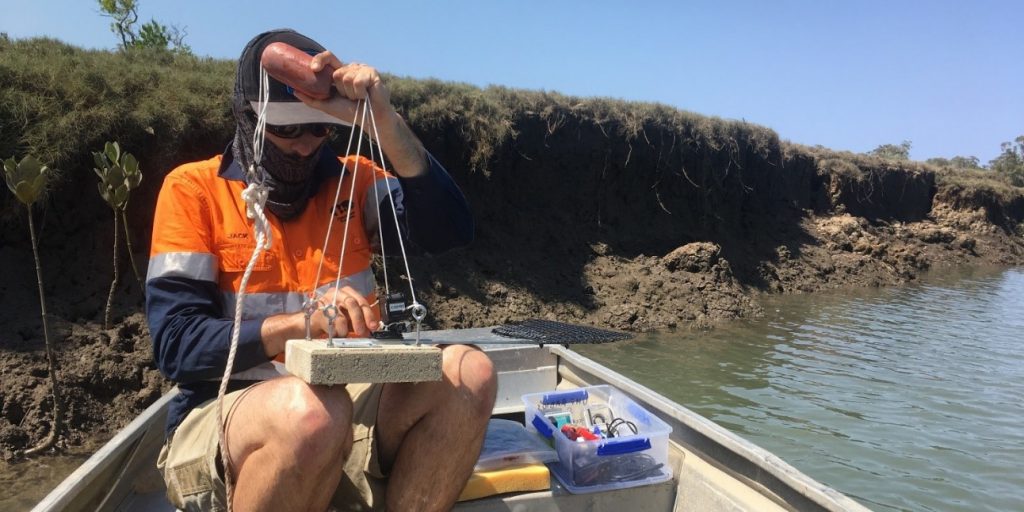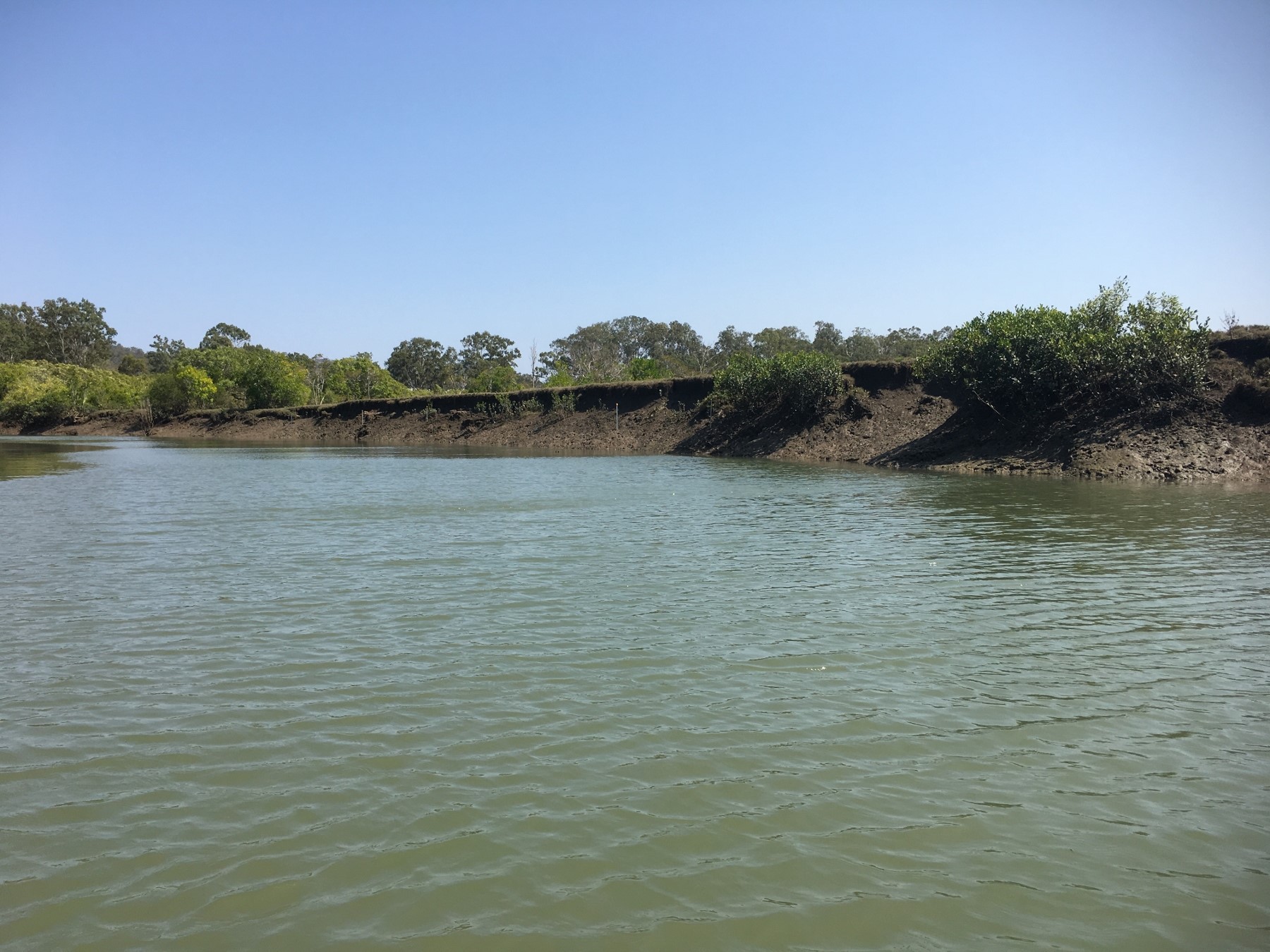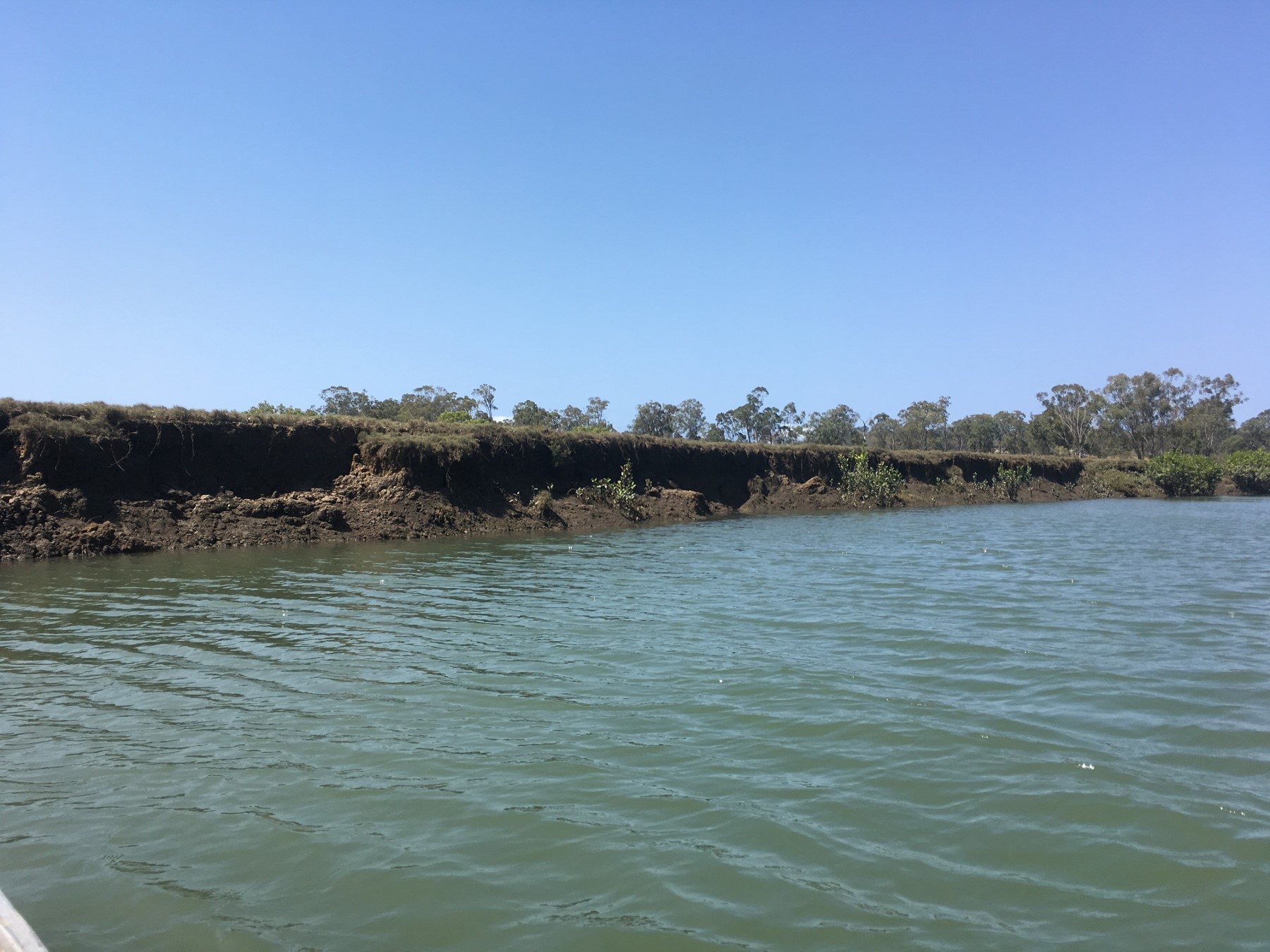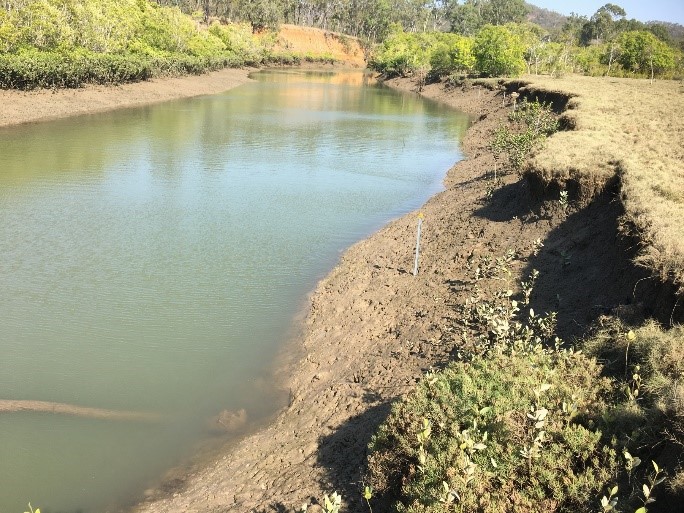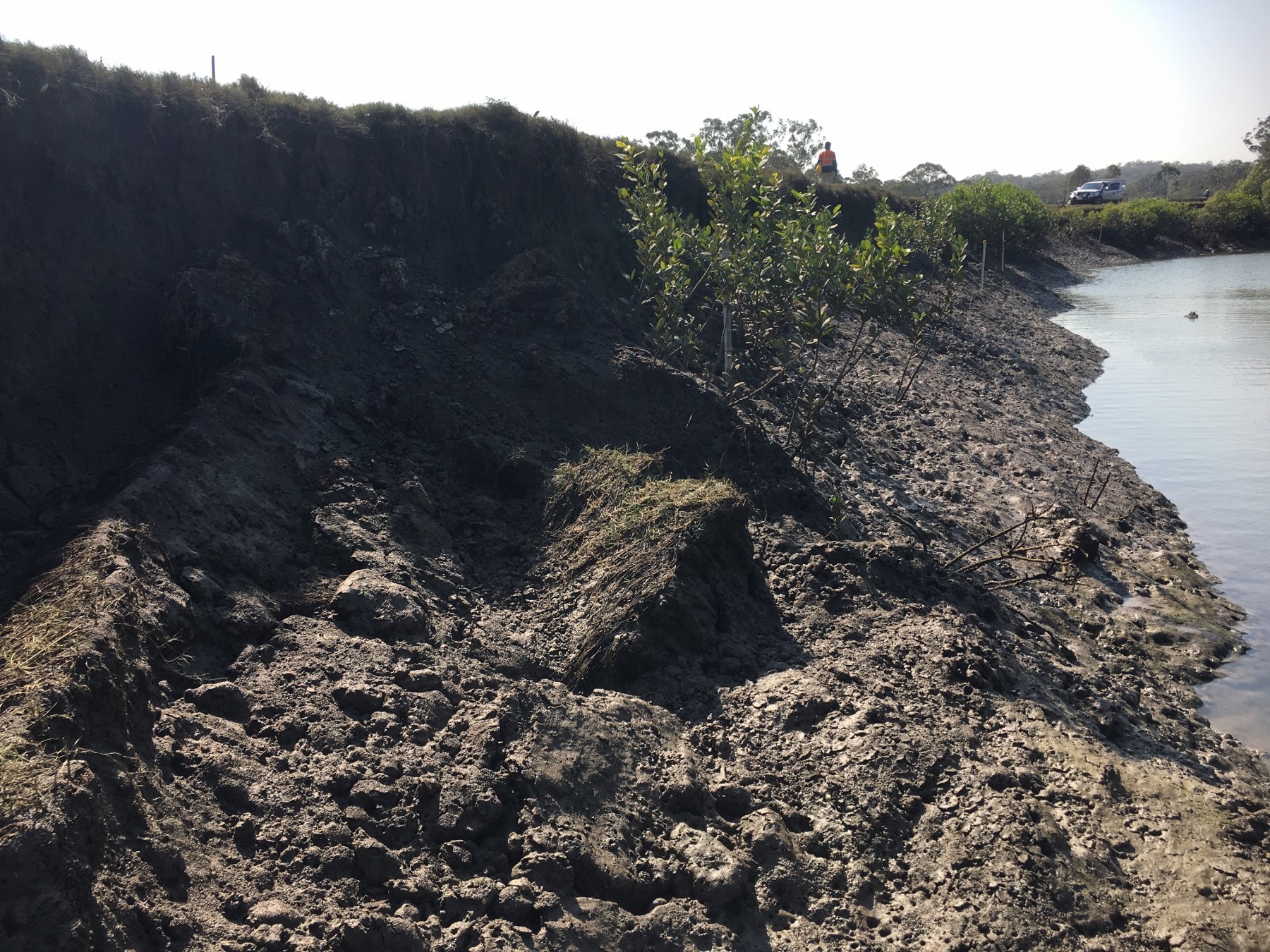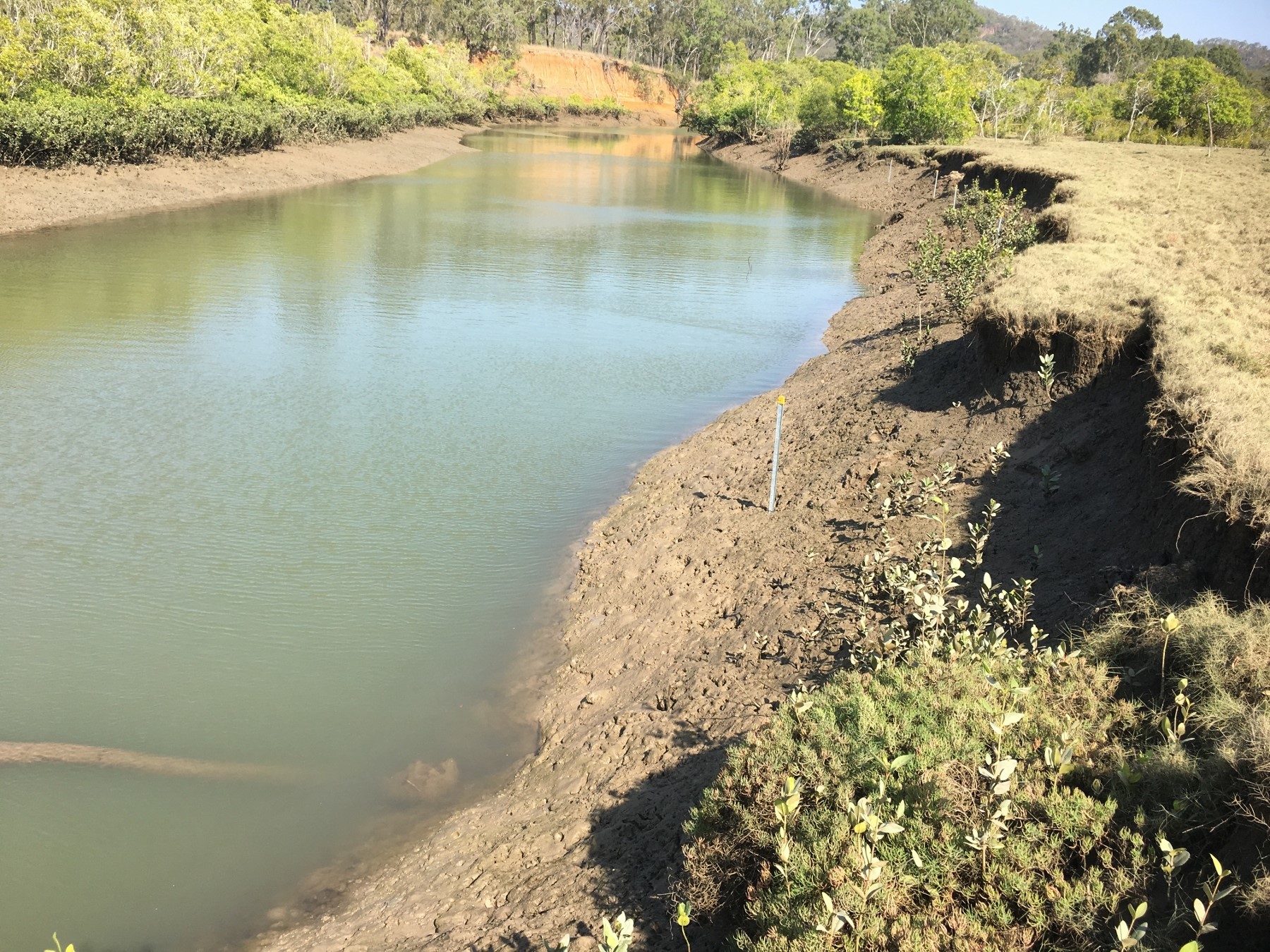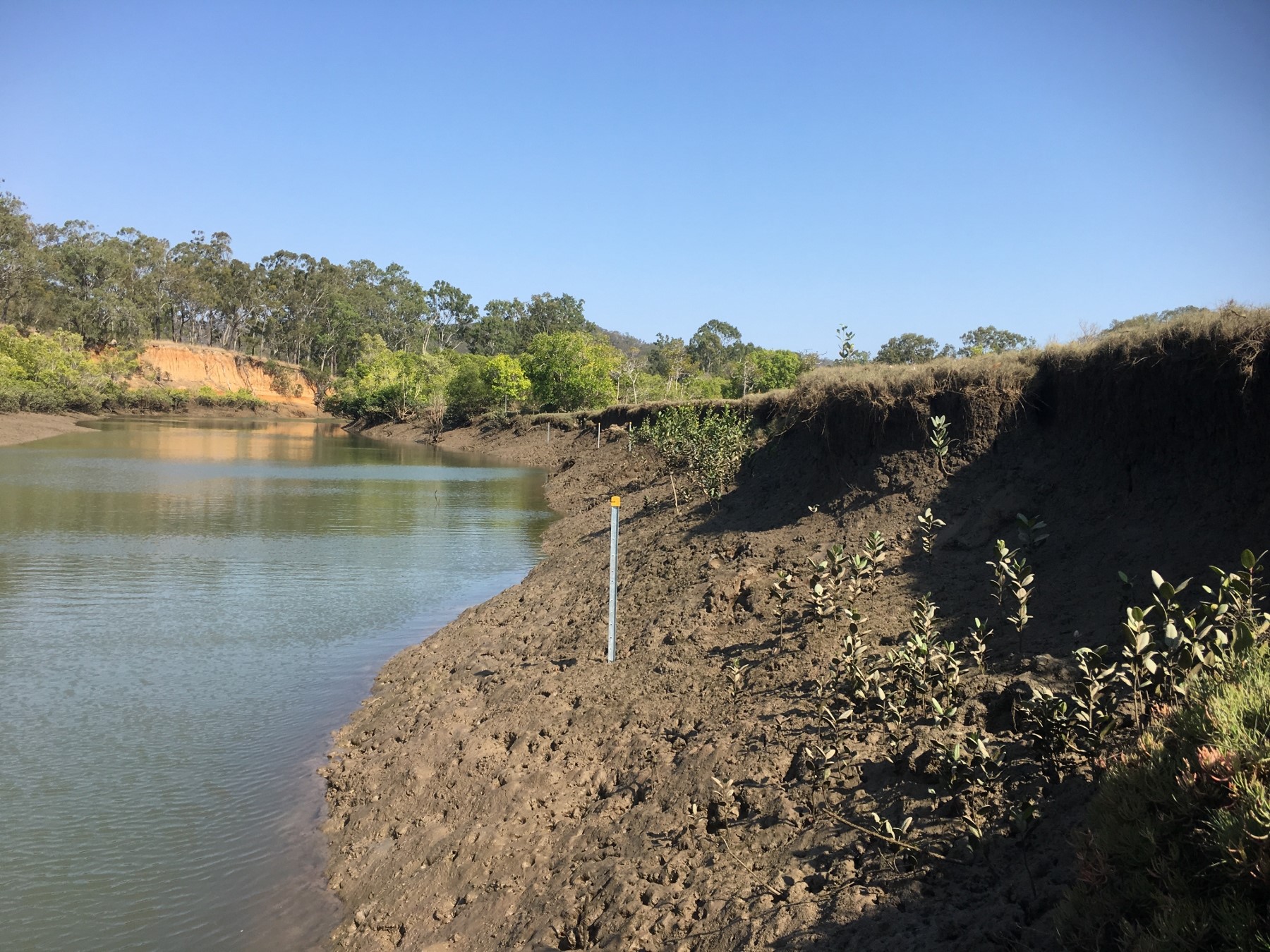Clyde Creek Marine Fish Habitat Rehabilitation
Catchment Solutions conducted a marine fish habitat rehabilitation project in Clyde Creek, Gladstone utilising large, engineered log-jam structures to stabilise a section of actively eroding streambank, while improving fish habitat for economically important species.
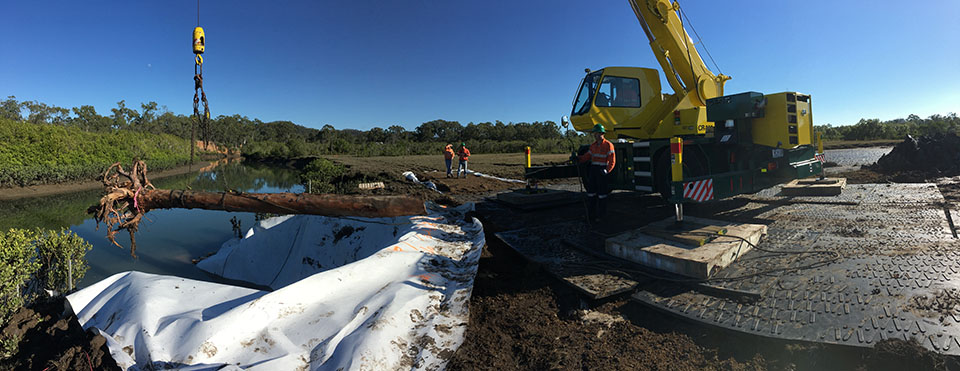
Clyde Creek, Gladstone, marine fish habitat rehabilitation project.
Background and Objectives
In July 2018, Catchment Solutions conducted a marine fish habitat rehabilitation project in Clyde Creek, Gladstone. The project aimed to achieve a range of outcomes by undertaking a holistic suite of system repair works through utilising large, engineered log-jam structures to stabilise a section of actively eroding streambank, while improving fish habitat for economically important species.
Engineered log-jam structures were identified as the best remediation option to achieve the objectives at this site, with five structures, each containing 17 logs, constructed along the streambank. Log jams are permeable structures that extend into the stream for a short distance to deflect erosive stream flows away from the streambank into the main channel, thus preventing further erosion. This promotes the deposition of sediment on the downstream side of the structure, thus providing adequate substrate for growth of marine plants.
It is the re-colonisation of marine plants at the site that will repair the streambank into perpetuity, and it is the role of the log jams to provide the correct hydraulic conditions (reduced bank velocity) and deposition areas for marine plants to colonise. Importantly, the log-jam structures have the advantage of providing critical, structurally-complex instream habitat for a range of socioeconomically important fish species.
Site images before remediation works, showing extent of erosion and degradation of the streambank and the lack of instream fish habitat and marine plant colonisation.
Objectives of the project
- Restore fish habitat function on a severely eroded estuarine creek bank by reconnecting fragmented marine plant communities,
- Prevent further erosion processes from degrading marine plant and fish habitats,
- Incorporate innovative structures to increase the availability of structurally complex fish habitat,
- Increase fisheries productivity by providing habitat for economically important fish species, such as mangrove jack and barramundi, and
- Reduce sediment export to downstream receiving environments i.e. Calliope River and Great Barrier Reef Marine Park.
Log Jam Construction
A slew crane was utilised to lower each log, one at a time, into voids created in the streambank (Figure 2). Once all 17 logs of the structure had been positioned in place, 12 mm fibre core wire rope was used to secure all logs of the structure together. A lever block was utilised to provide maximum tension on the fibre core wire rope, ensuring no slip or movement of logs within the structures. 7.0m pin logs were then driven into the substrate outside of the structures to provide further stabilisation (Figure 3 and Figure 4).
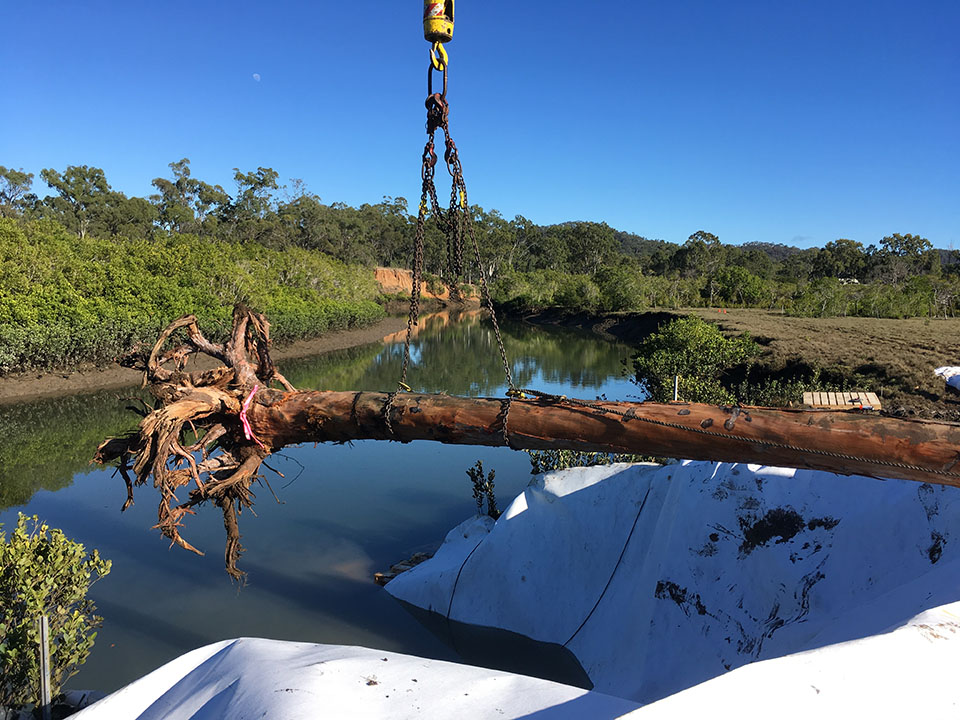
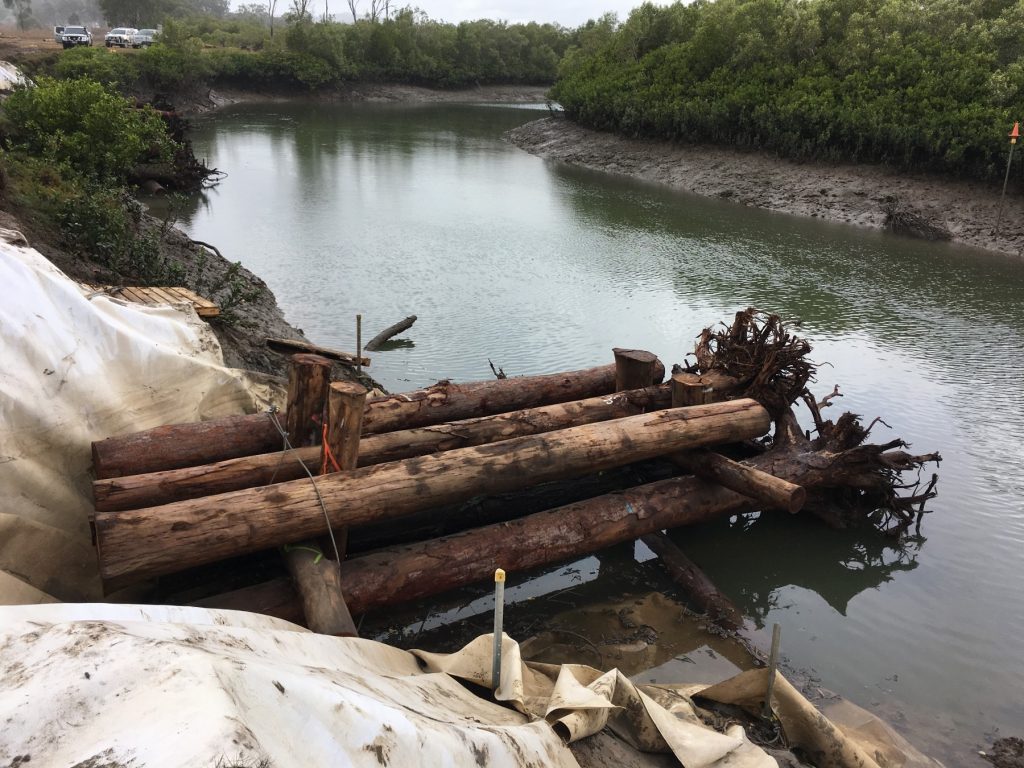
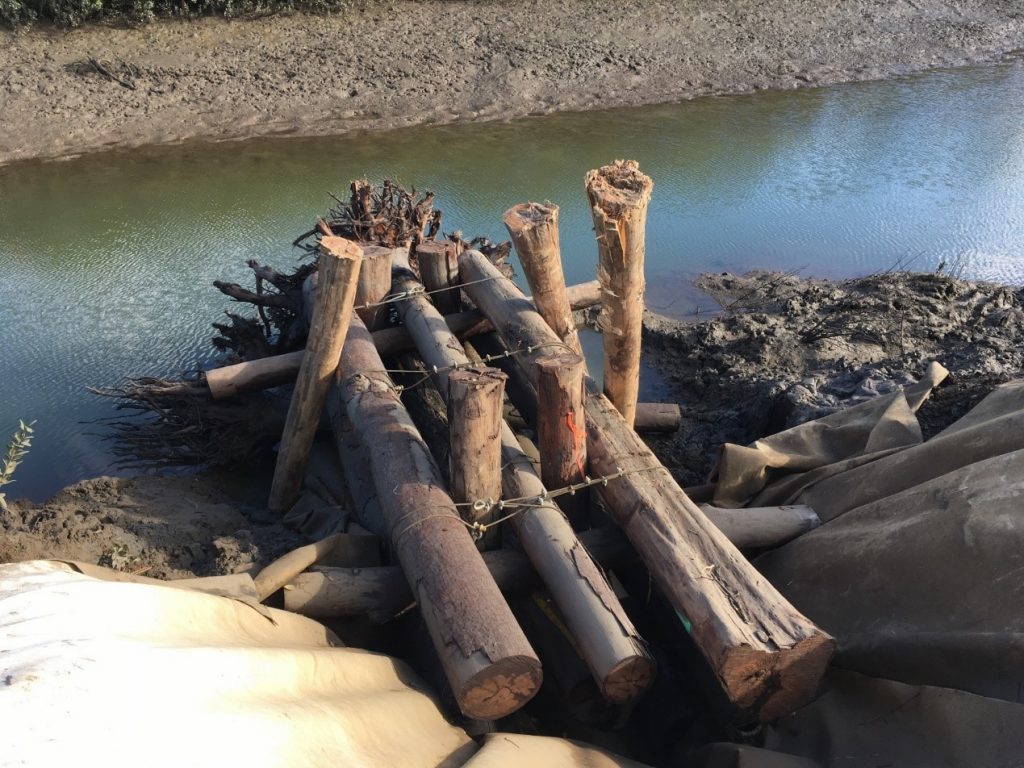
The final step in securing the structures in place was to back fill the voids structures were built within using rock. An excavator was used to fill the voids and compact the rock around the structures, to firmly lock the structure into position within the streambank (Figure 5 and Figure 6).
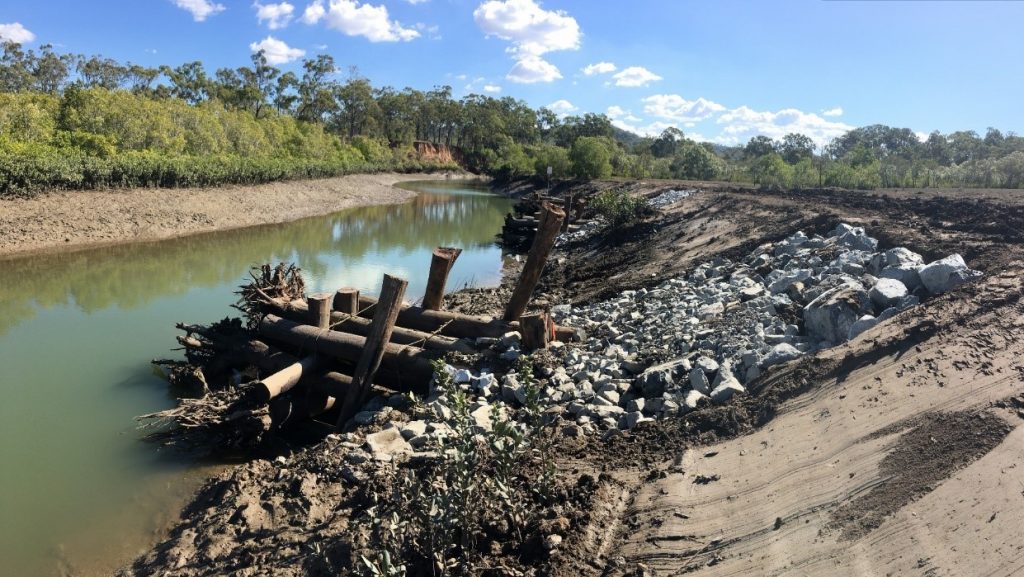
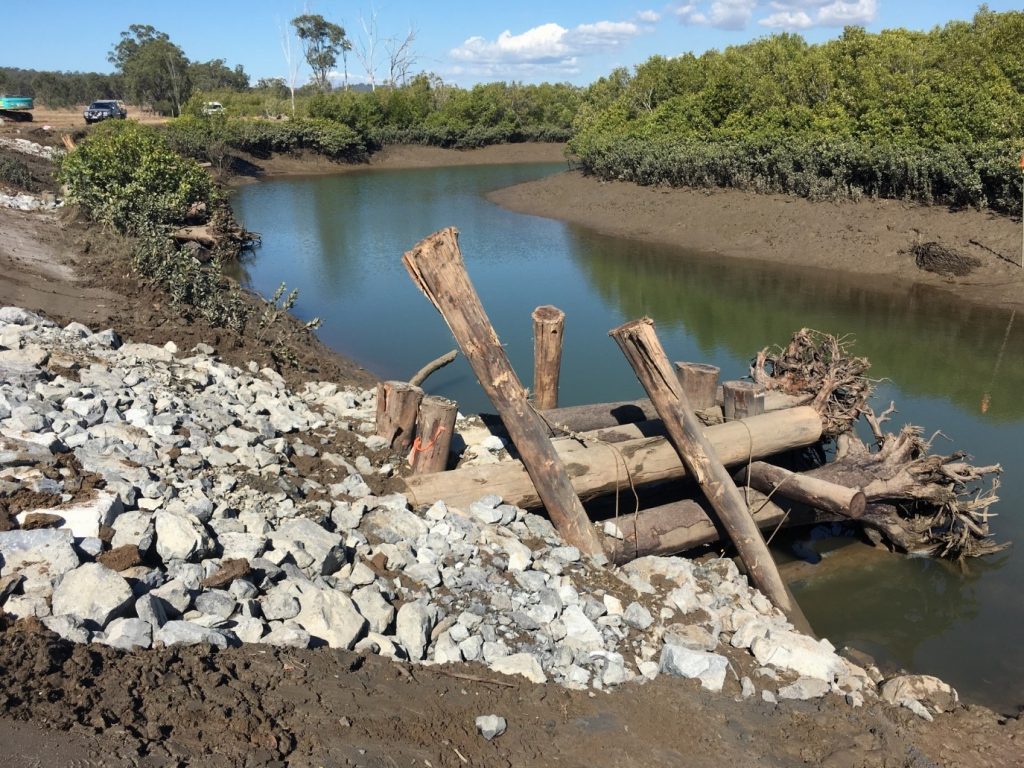
Following completed construction of all five structures, when all construction machinery had vacated the site, a single excavator was used to batter the top section of slumping streambank back to a 1V: 3H gradient (Figure 7). This will minimise future erosion and provide suitable conditions for the re-colonisation of mangroves and other marine plants. Once established, the marine plant communities will further consolidate the reformed streambank and provide additional fish habitat into the future.
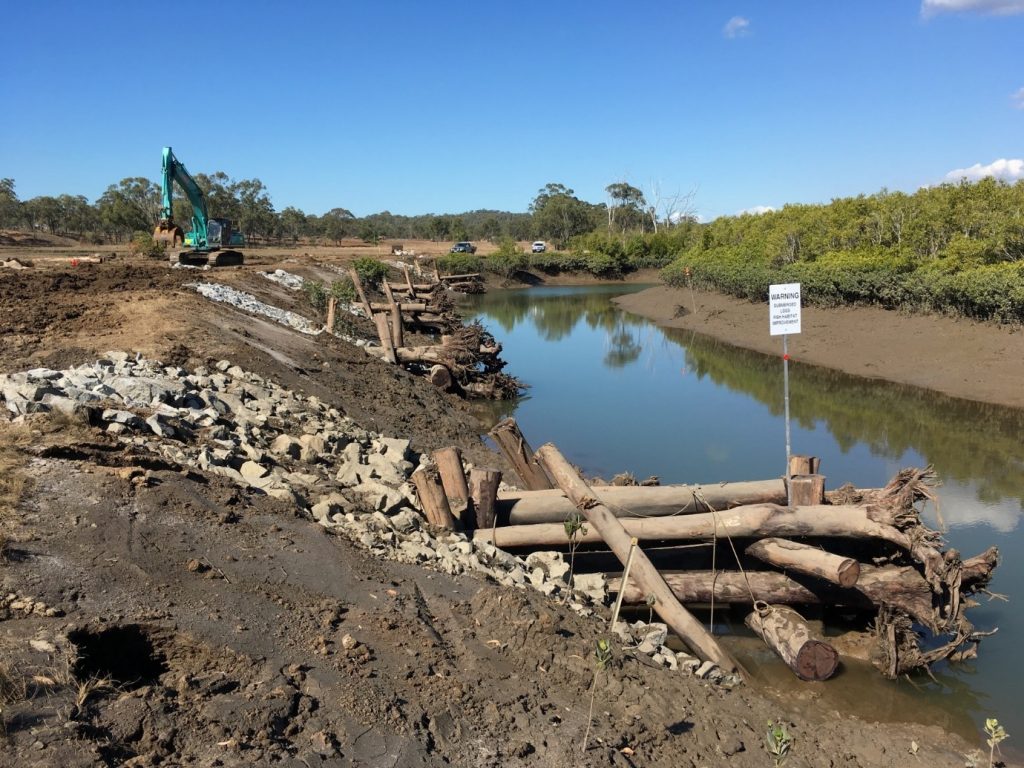
Project Outcomes
The engineered log-jam structures will rehabilitate the actively eroding streambank by dissipating and deflecting stream flows away from the impacted streambank and back into the centre of the waterway. The structures also encourage the deposition of sediment transported from the upper catchment. This deposition will occur in areas of low velocity, on the downstream side of the structures. Future marine plant communities established due to the remediation works will eventually reconnect with remnant communities upstream and downstream of the works, stabilising and protecting the streambank from continued erosion. Additionally, the large rootballs present within the structures will provide critical habitat for a range of socioeconomically important fish species.
Benefits to Fisheries Resources
The primary benefit of the project to fisheries resources, is through the provision of critical, structurally complex habitat, specifically, during low tide periods. Due to the previous years of active erosion at the site, available habitat is virtually non-existent at low tide. The structures now provide a number of locations where important commercial, recreational and indigenous fishery species such as barramundi, mangrove jack, threadfin salmon and bream, can seek refuge (Figure 10). These structures will also provide crucial refugia habitat on high tides for juvenile fish and baitfish species such as mullet, herring and glassfish for predator avoidance.
Future Monitoring
Future monitoring will continue to assist in determining project success and help convey results to stakeholders. Monitoring activities will include monitoring marine plant establishment to describe species composition, community structure and size class densities, sediment erosion/deposition on the streambank and fish community monitoring will also occur via underwater video analysis utilising baited and unbaited cameras.
